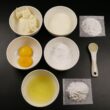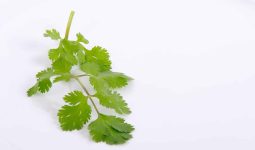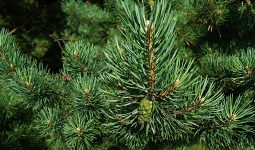Hello there, eco-friendly people! Have you ever considered the hardy and adaptable plants that live in the desert? Those who thrive in the sweltering heat and get by on just a few sips of water? Now that we’re prepared, let’s begin an exciting journey to learn more about the amazing world of desert flora.
You might wonder, “Why should I bother learning about desert plants?” Keep an eye out because these resilient green beauties have some amazing tales to share.
Not only do they survive, but they play an essential role in some of the harshest ecosystems on the planet. Understanding them can help us learn valuable lessons about resilience, adaptability, and the intricate balance of life on Earth.
So come along with us as we uncover the mysteries of desert plants, the unsung heroes of the arid wilderness, whether you’re an aspiring botanist or simply interested in the wonders of nature.
1. Saguaro Cactus

The saguaro cactus is an iconic symbol of the Sonoran Desert and has been a part of the landscape for centuries.
Native to this region, this tall tree-like plant can grow over 40 feet tall and live for over 150 years.
This remarkable desert survivor has adapted to dry conditions by being able to absorb and store a significant amount of water.
It also produces sweet red fruits that locals have used as food for thousands of years.
Also, the iconic shape of the saguaro cactus consists of large branches that stretch upwards from its long base trunk.
These arms provide much more surface area than other types of cacti.
Hence, it draws in more sunlight and makes growth possible in very hot conditions experienced in the Sonoran Desert.
Along with its red fruits, these distinct characteristics lend the saguaro unique beauty. Thus, it’s famous throughout Arizona and worldwide.
2. Joshua Tree
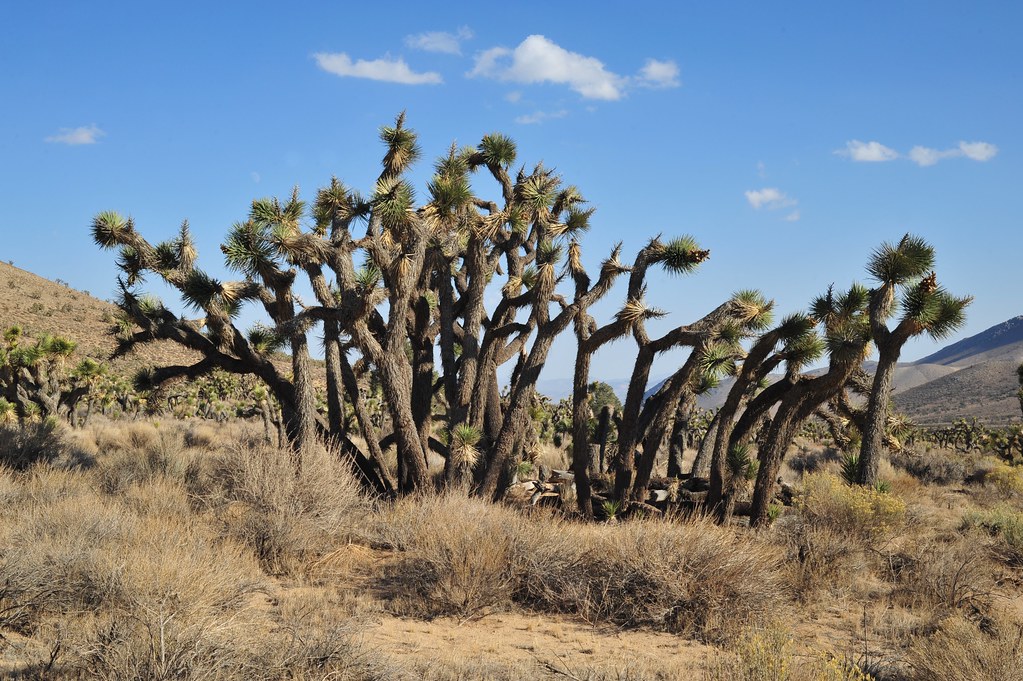
Joshua trees are next on our list of plants that live in the desert.
Also called yucca palms or yucca palm trees, they are an iconic species of the arid deserts of North America.
Growing predominantly in the southwest states of California, Arizona, Nevada, and Utah, these stately plants represent a unique beauty in a harsh landscape.
Their slow growth rate contributes to their odd shape.
They stretch upwards with thick trunks of small fibers holding long evergreen leaves along their branches.
When blooms occur, they will occasionally produce small white flowers complete with fruit.
These blooms usually occur after periods of higher-than-normal rainfall during the right season.
However, nothing dulls their spirit. These hardy plants can survive and even thrive in extreme temperatures due to their deep root systems.
Further, Joshua trees become a desert oasis for animals searching for food or shelter among their branches.
So, they’re living up to their reputation as an amazing survivor of the scorching desert sun!
3. Agave

Agave plants are an important part of the Americas, with many species found in regions such as Mexico and the Caribbean.
These succulent plants have easily identifiable features, such as large circular arrangements of long, leafy green fleshy leaves.
They’re also lined with sharp teeth-like spines that protect them from predators.
Some species can grow to over 8 feet tall. Economically, agave is essential for producing mescal liquors such as tequila and mezcal.
The various species of agave offer benefits to a variety of areas.
Housing construction uses durable large leaves to line roofs and walls while bees draw nectar from their flowers.
Also, the pulp of roasted hearts can be eaten in tortillas and sweet dishes or used to make fabrics for traditional clothing and baskets.
Moreover, Agaves provide living fences and wind blocks. That’s due to its slow growth rate, but can reach maturity quickly when irrigated correctly.
By harvesting water in their thick leaves, agave can survive arid environments as an important source of sustenance for humans and animals.
4. Brittlebush
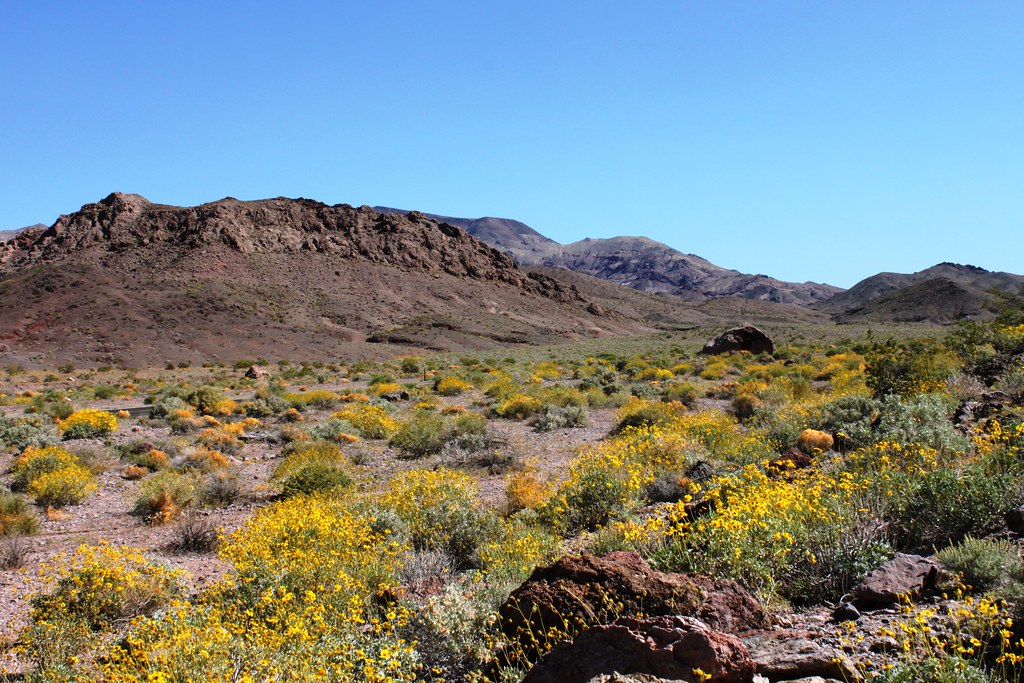
The brittlebush is a small shrub native to North America’s Sonoran and Mojave Deserts.
Growing up to five feet tall, it has soft gray oval leaves with white fuzz or hairs that help block the sun and protect the stem from heat and cold.
Its stems are quite brittle, which makes it an extremely drought-tolerant species as it requires less water than many other desert plants.
This drought-resistant characteristic helps the brittlebush survive in harsh climates.
The plant also produces bright yellow or purple flowers that release a pleasant fragrance.
The resilient nature of this plant has made it an important resource for desert communities for hundreds of years.
It provided fuel for heating and cooking in ancient times.
But today, its sweet-smelling flowers are used as incense, dyes, decorative items, teas, and poultices for medicinal purposes.
In addition, it provides food for deer and other animals who use them for shelter during wet conditions.
It also provides shade during dryer times in the desert climate.
All these characteristics make the brittlebush a key figure in arid regions all over North American deserts.
5. Yellow Bells
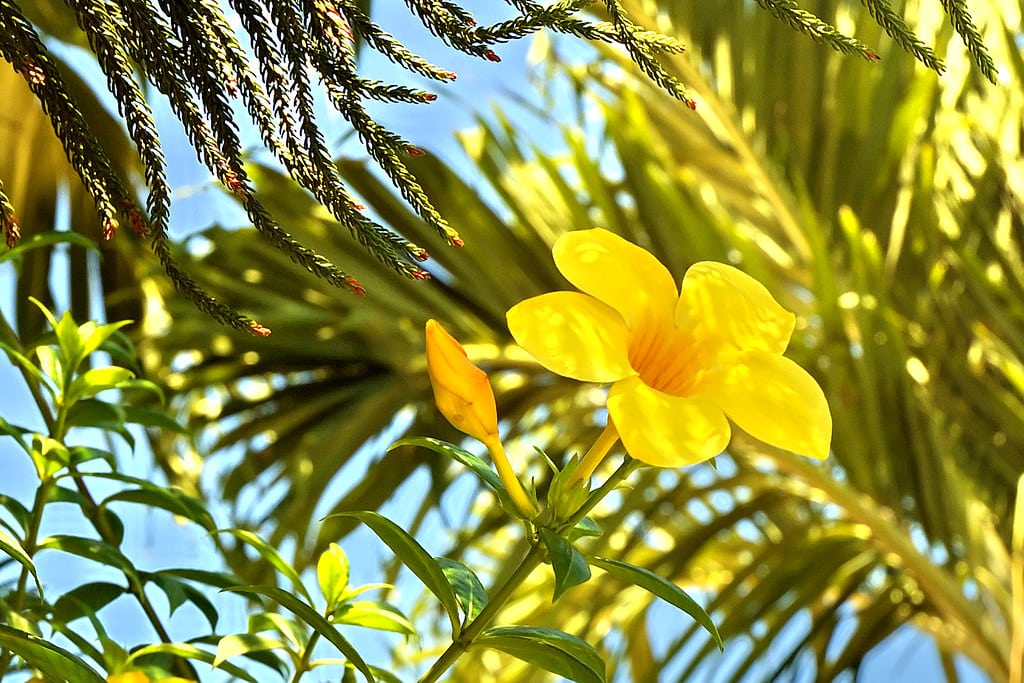
Among the plants that live in the desert are the Yellow Bells. The Yellow Bells plant is an eye-catching addition to any landscape.
It features bright yellow flowers in a funnel shape and can easily be identified from its name.
Hardy under most desert conditions, this species can survive long periods of extreme drought and heat.
Growing in an elliptic or round manner, the Yellow Bells are perfect for those wanting a low-maintenance flowering plant.
Aside from their beauty, the Yellow Bells are also known as Wild Lilac, Texas Silverleaf, and Purple Sage.
Despite being called sage, they are not part of that family but make great ornamental plants for your home.
Other species, such as the Bottlebrush, feature eye-catching red flowers amidst light needle-like leaves and make excellent trees.
So, whether you want a flowering desert plant or accentuated foliage for your home, the Yellow Bells provide just that!
6. Creosote Bush
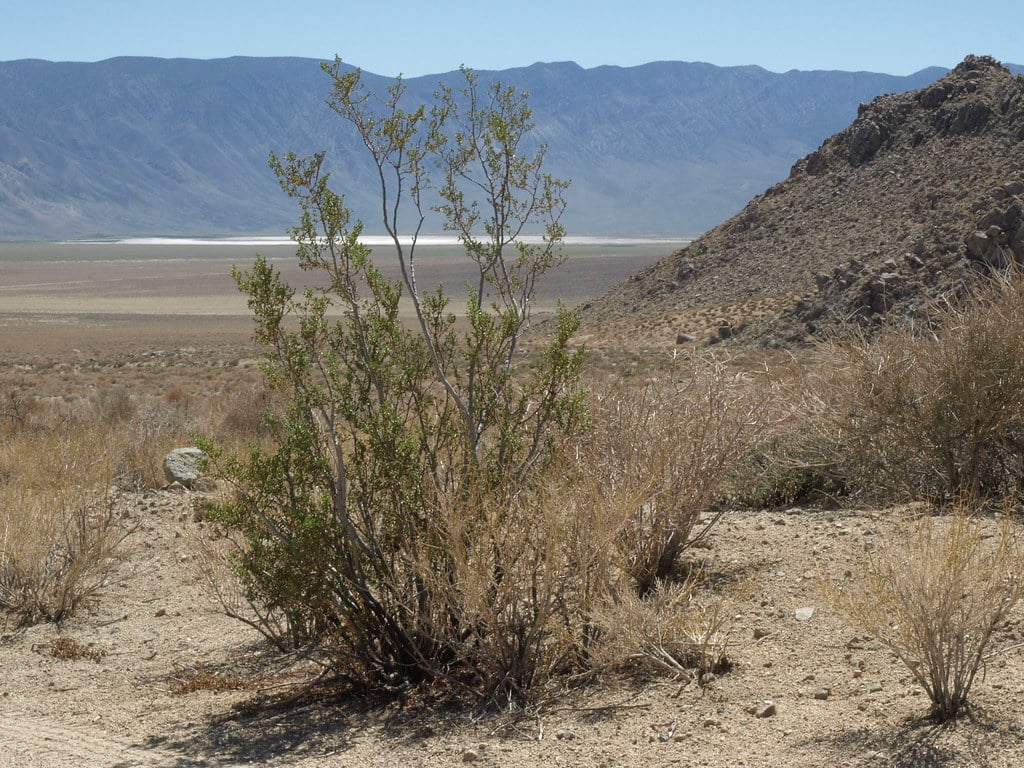
The creosote bush is a resilient shrub found in deserts of North America.
Adapted to survive in extreme dry conditions, this evergreen plant can grow up to 10 feet tall.
And it has evolved to prevent other plants from growing around it, ensuring access to more resources and water.
Also, the creosote bush is historically important as Native Americans have used it for centuries as an herbal remedy.
Its medicinal uses are still widely recognized today, particularly in Mexico, where similar practices are continued.
The creosote bush has endured rigorous desert conditions for hundreds of years. It is a symbol of perseverance and strength that cannot be replicated.
Thus, it has inspired many to see past the harshness of its surroundings and admire its beauty instead.
Further, its root systems cling below the ground with an incredible grasp, providing one last hold on survival before the sun evaporates all moisture.
As long as there continue to be deserts across North America, there will be room for this bush’s careful resurgence and endurance against any odds.
7. Golden Barrel Cactus
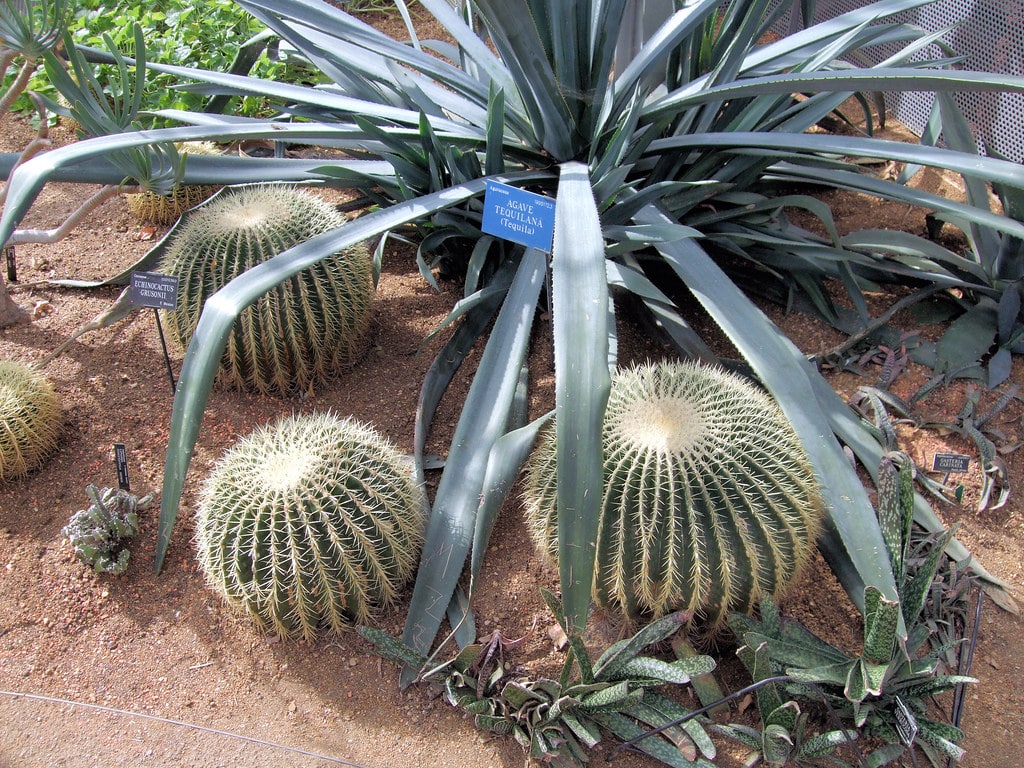
The Golden Barrel Cactus is a popular and unique succulent well suited to desert landscapes.
It is easily recognizable due to its sphere-like shape, usually yellow or white with spiny thorns.
Also, it tops out at about three feet high when fully mature and can live for up to 30 years if cared for properly.
Due to its slow growth rate, it can take a few years to reach an impressive size.
This cactus requires sandy soil with good drainage to survive.
Hence, it’s a great choice for home gardeners looking for an interesting addition to their yard.
If you live in an area where the conditions resemble its natural habitat of Northern Mexico and Southern Texas, then this cactus will thrive in your environment.
However, you must be sure not to overwater the plant. Too much water can damage the roots and cause rot, which could prevent them from surviving longer than expected.
8. Ocotillo
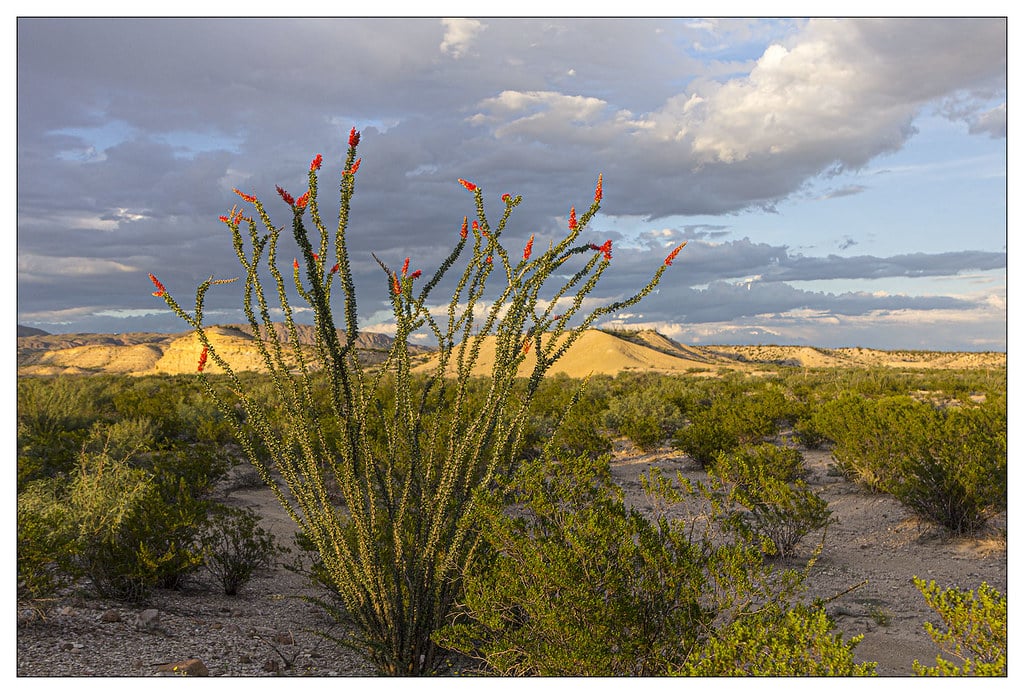
The Ocotillo is an iconic desert plant known for its bright red flowers and long, slender stems.
It originates in the American Southwest and is prevalent in New Mexico and California deserts.
It can brave the harsh arid climates, and its leaves tend to fall off if temperatures become hot, leading to dramatic transformations.
During moisture, this cactus blooms with brilliant crimson petals that dot its branches like miniature flames.
The Yellow Palo Verde deciduous tree is another plant species within these desert regions with similar blooming patterns according to climate conditions.
When rainstorms douse the land with plentiful precipitation, the Sonoran desert flora springs to life.
These resilient plants store water within their stalks to survive drought – a crucial skill in unforgiving environments!
9. Desert Primrose
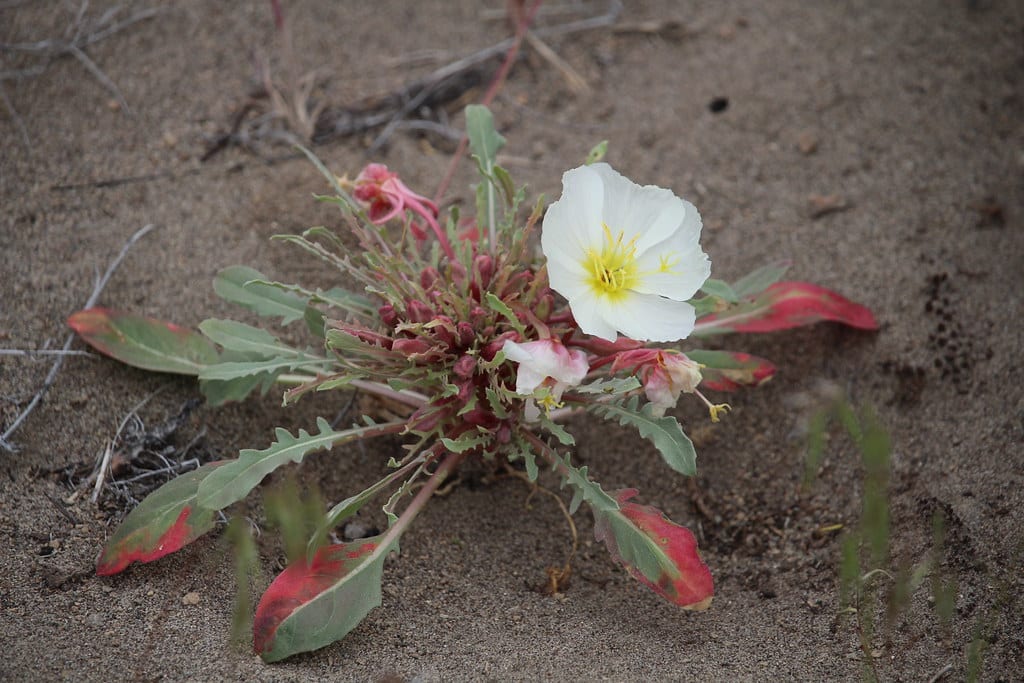
Next on our list of the plants that live in the desert is the Desert Primrose.
The Desert Primrose is a delicate flower with blooms resembling crepe paper in desert regions such as Utah, Nevada, California, and Arizona.
Also known as Oenothera primiveris or the Birdcage Evening Primrose, it typically only grows to about 45 cm in height and spreads to 101 cm wide.
Over time, these flowers have grown more popular due to their beauty and attractiveness amongst gardeners and plant enthusiasts across the Southwest.
Also, the Desert Primrose are nocturnal plants; they open their petals each night and close them during the day.
This flower often attracts various pollinating insects at night as they give off a distinct aroma when blossoming.
Their five-petal yellow blooms act as a beacon of light for those pollinator’s eyesight in the darkness of night.
Further, Desert Primrose can easily be planted along roadsides or trails in desert climates, where it will thrive without maintenance for many years.
It blooms from late winter to mid-spring, making it ideal for creating stunningly lively landscapes throughout its growing area.
10. Chaste Tree

The Chaste Tree (Vitex agnus-castus) is a desert species of flowering plant known for its decorative qualities.
It has semi-minty, silverish-gray leaves and purple flowers that bloom in the summertime.
This resilient flowering plant can grow into an attractive mini tree or tall shrub with multiple stems, reaching up to 16 feet high in ideal conditions.
Also, the Chaste Tree is tolerant to drought and heat, making it a great plant choice for arid areas and regions prone to temperate weather.
A popular feature of the Chaste Tree is its beautiful lilac flowers, which attract many birds and insects, such as bees and butterflies.
Additionally, the sage-scented leaves are fragrant and pleasing to the senses due to their mild minty aroma.
Altogether, its attractive features can survive in various nations for anyone looking to add botanical beauty to their home or garden space.
11. Tumbleweed
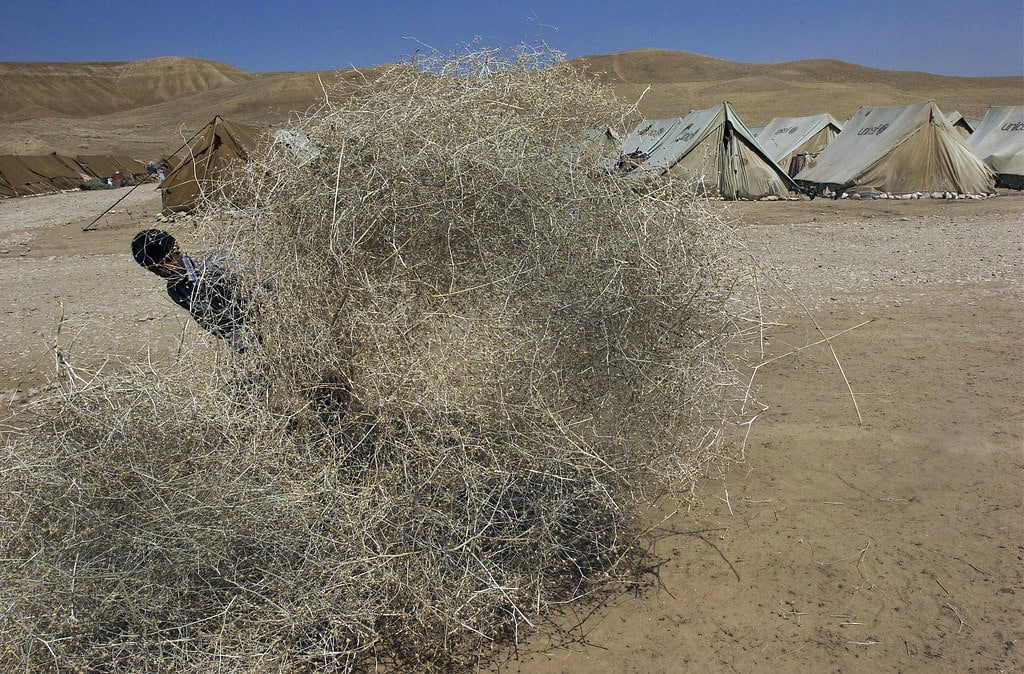
Tumbleweed or common Russian thistle, is a plant species and symbol associated with the American Wild West.
Recognizable for their dry and shapeless appearance, tumbleweed specimens can detach from their root system as they mature.
Faced with the wind, the now-dead plant will begin rolling across the landscape, aiding in scatter drying their seed or spores.
Tumbleweed is an inconspicuous plant until it reaches maturity when its spiky branches change from green to greyish yellow hue and begin to dry out.
This is due to its well-adapted root system, which allows for survival in arid climates and even acts as a store for water during extreme drought.
As soon as temperatures drop significantly and moisture levels decrease, the tumbleweed detaches itself.
Hence, it provides plenty of fertilizer for new plants as it rolls along aided by winds, which help ease dispersing seeds across larger distances.
12. Desert Lily

The desert lily, also known as an ajo lily, is a stunning addition to North America’s Mojave and Sonoran deserts.
Its vibrant white flowers stand out in stark contrast to the surrounding desert landscape, growing up to one foot in length and attracting pollinators on hot summer days.
This delightful flower gets its name from its edible bulb, which has a unique garlic flavor – a taste of the wilderness.
The desert lily adds some color to the parched landscapes of arid North American deserts.
It is usually found near sandy or rocky areas. It grows from one to four feet in height with long cylindrical stems topped with big blue-green leaves and showy white-flowered blooms.
The resilient nature of this plant ensures that it can easily survive hostile terrain, making it a great source of food for native wildlife and a beautiful sight for humans alike!
13. Devil’s Claw
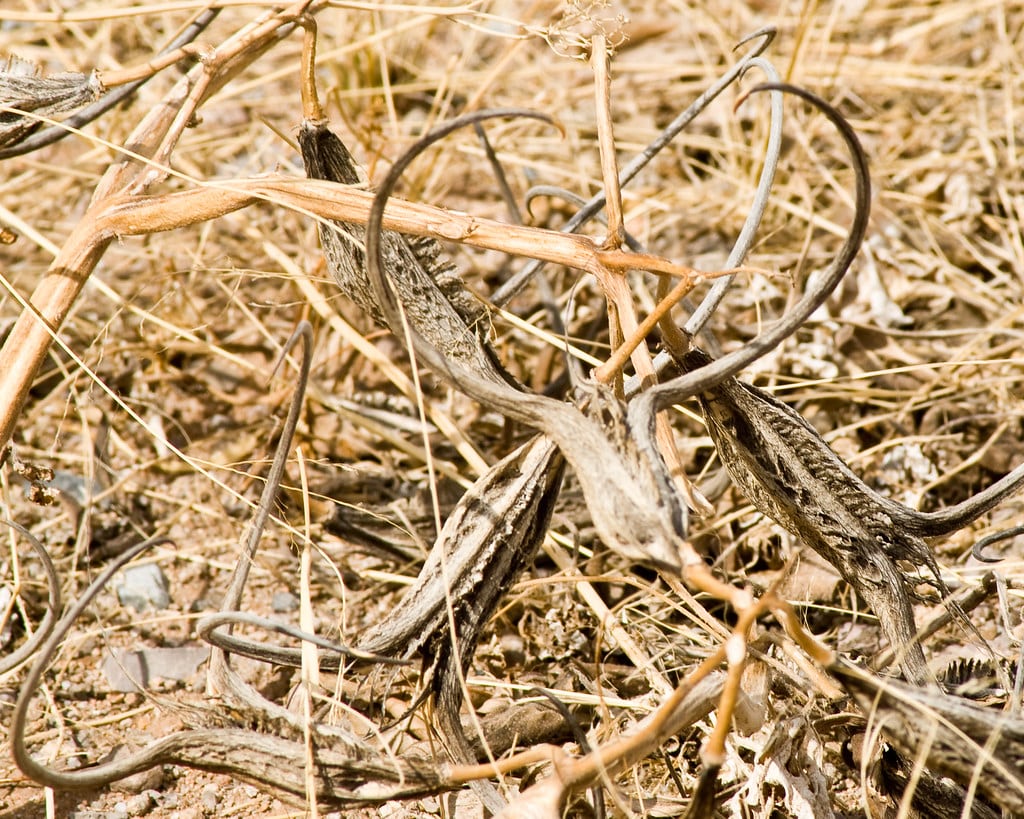
The Devil’s Claw is among the plants that live in the desert. It’s a unique desert shrub that is found in areas with moderate heat and dry soil.
Growing wide and low, it is easily recognizable by its funnel-shaped, brightly-colored flowers and heart-shaped leaves with curly margins.
Its colossal seed pods accentuate these features, which reach up to 10 cm high when fully developed.
Native to the Sonoran Desert, Devil’s Claw has been used in traditional healing methods for centuries.
Its leaves relieve pain from arthritis, rheumatism, muscle aches, and stomach cramps.
Also, the plant’s roots provide anti-inflammatory properties that have proven useful for treating inflammation and various skin conditions.
Beyond medicinal uses, the long tough fibers found in the stems of Devils’ Claw are often harvested and woven together into baskets or mats – an ancient craft passed down from generations over time.
14. Marsh Aster
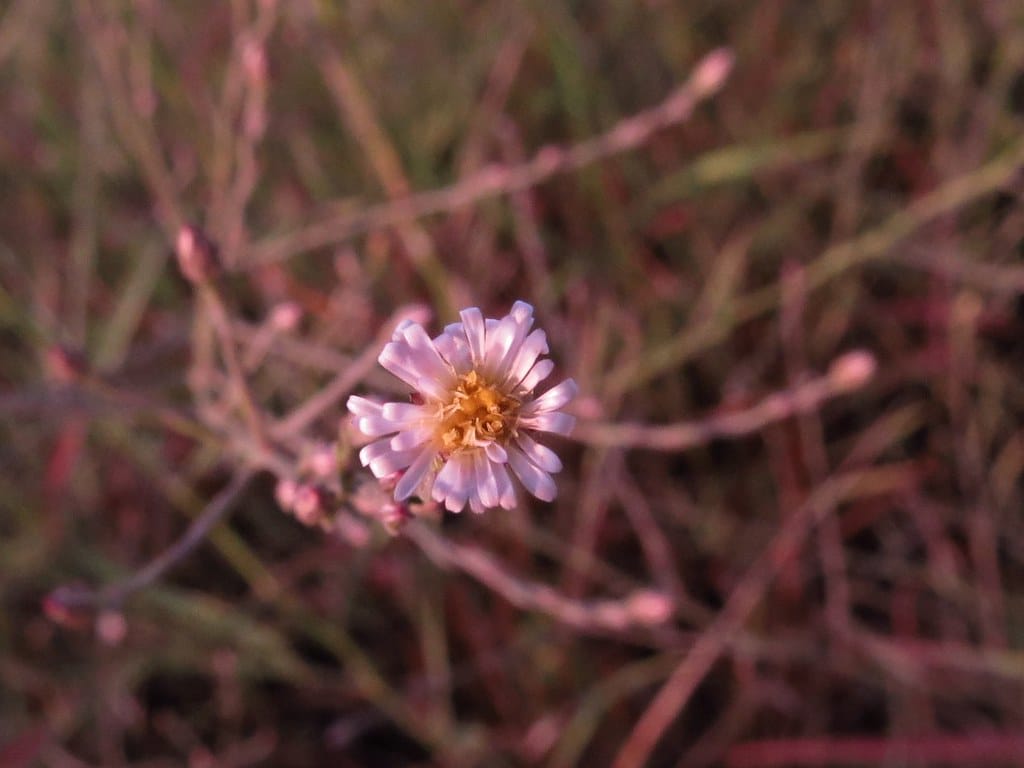
The Marsh Aster is a small perennial native plant with an iconic purple cup-shaped flower with a round yellow center.
This desert beauty can be found growing in sandy soils that are in arid climates, such as the southwestern parts of the United States.
It has thin and elongated leaves up to 10 cm long, standing atop slender stems that reach 120 cm tall.
The Marsh Aster blooms from spring to summer, offering eye-catching color to any landscape or garden.
Also, this stunning species presents great ground-covering landscaping options when placed on borders and paths.
It complements other varieties of flowers well, including its bright orange California Poppy cousin, which features large 3-inch cup-shaped flowers that grow low and wide along the ground.
Whether used alone or combined with other flowers for showy displays, this gem will fit perfectly into any desert garden setting and offer brilliant colors from season to season.
15. Coral Vine
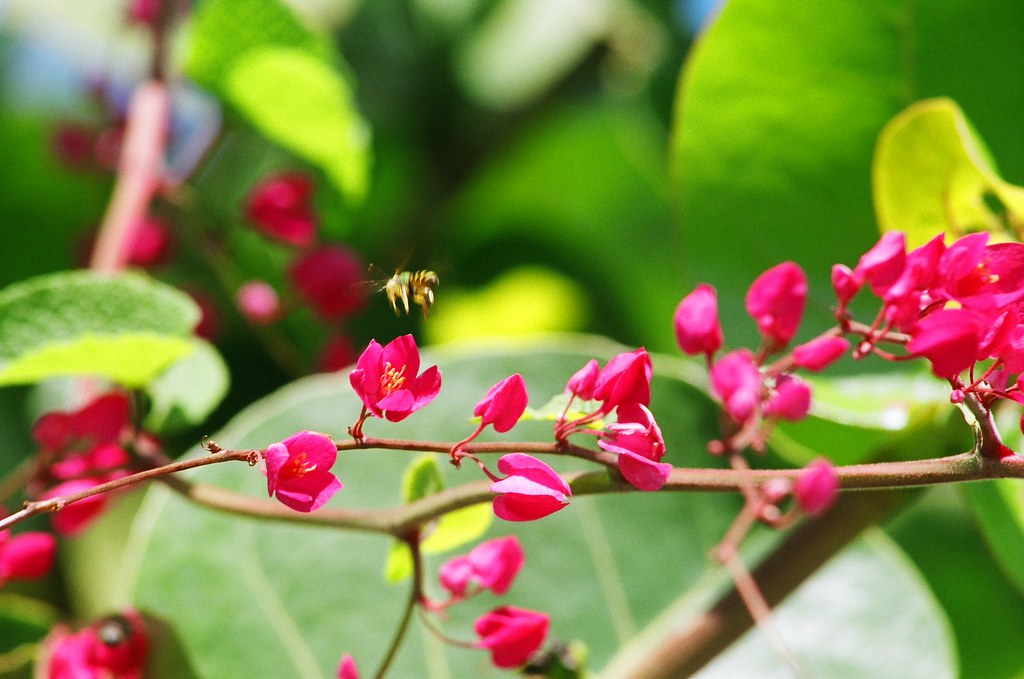
Coral Vine, also known as Antigonon Leptopus or Queen’s Wreath, is among the evergreen plants that live in the desert.
It displays an abundance of neatly packed heart-shaped leaves vibrant with color, ranging from deep purple and greenish-gray to yellow shades.
This climbing vine reaches up to 22 feet long in ideal conditions, and clusters of pink or white flowers adorn its thick foliage here and there.
These small flowers are about 2-3 inches in diameter, adding charm and character to the visual appeal of this vining creeper.
Occasional watering is required during dry spells but doesn’t require much additional maintenance once it is established in your garden.
In similar regions to the Coral Vine, another popular desert landscaping choice is Yucca rostrata, commonly called Spanish Dagger.
This species of yucca plants features large pointed leaflets highlighting a light bluish-green hue that creates perfect contrast when planted near Coral Vines or other low-spreading foliage-filled sites.
16. Mojave Aster
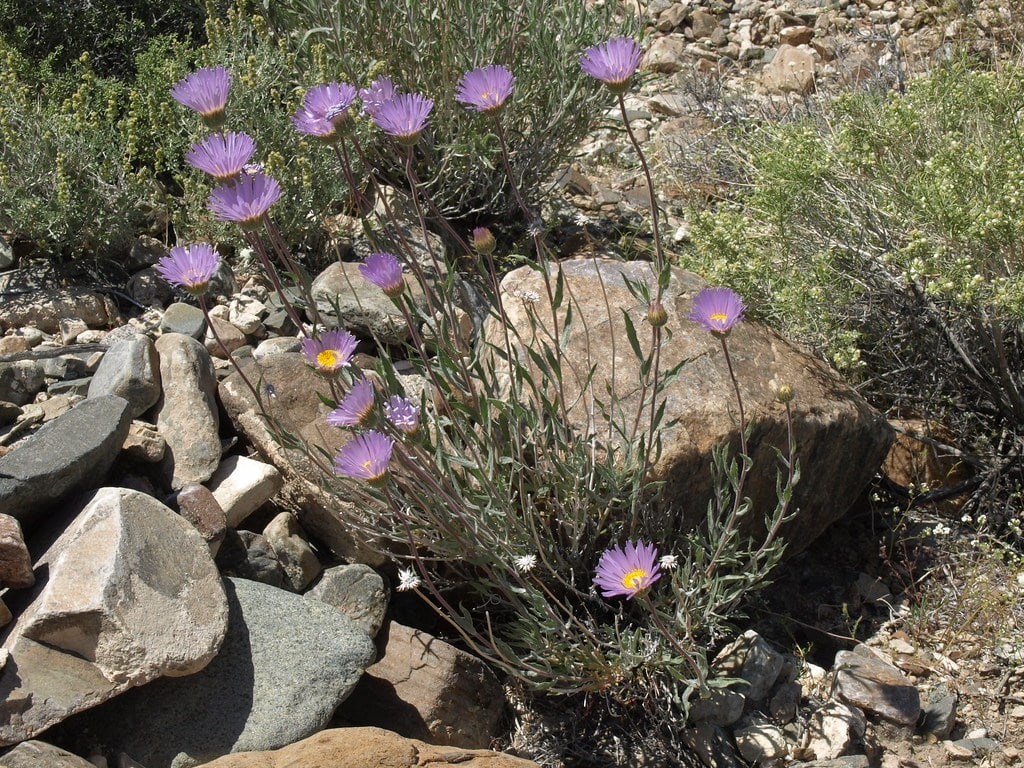
The Mojave Aster is the last on our list of plants that live in the desert. It is a unique and vibrant plant that lives in the desert of the same name.
This strikingly beautiful flower has long petals of rich lavender and cream strands radiating from a yellow center – resembling bubblegum-colored daisies.
Since they prefer plenty of sun, it’s possible to keep these asters alive even indoors as long as ample light is provided for them.
However, since Mojave Asters are small shrubs or mini trees, it’s important to give them plenty of space outdoors, too, if opting for an outdoor plant.
Furthermore, the cheerful plants have a superstitious reputation—many homeowners believe they bring good luck to their house if cared for properly.
Conclusion
As we end our study of plants that live in the desert, we hope you have a newfound respect for these survivors.
Each plant contributes significantly to the intricate web of life in the desert. It ranges from the capacity of cacti to store water to the bursts of color provided by desert wildflowers.
Take a moment to admire the beauty of these magnificent desert residents the next time you find yourself in a desert environment.
They highlight our world’s enormous diversity and remind us that life can survive even in the most hostile conditions.

